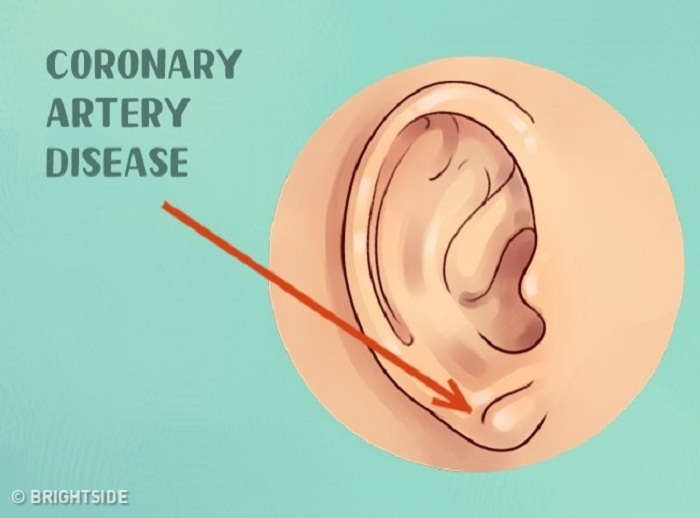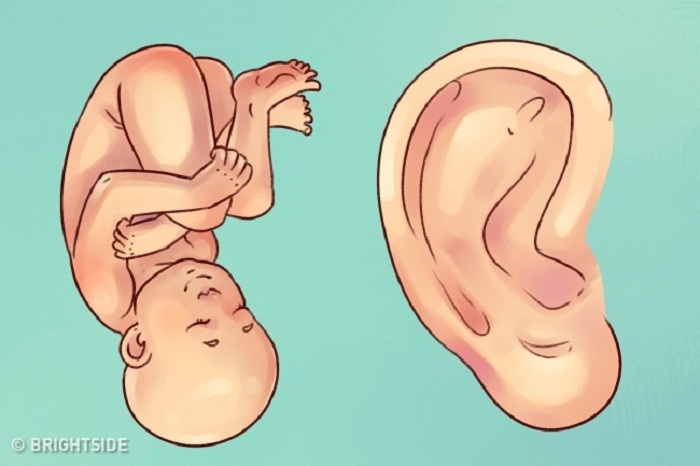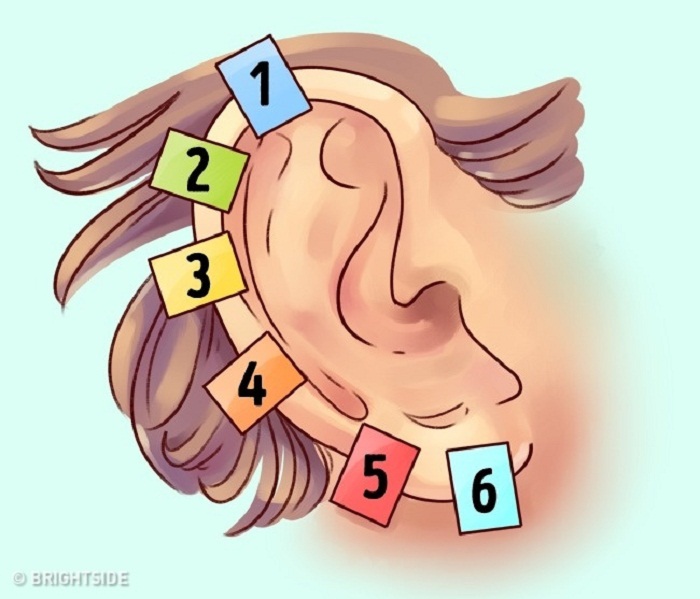
Recessive or dominant genes. According to a study, attached earlobes (connected directly to the side of your head) are considered to be recessive. Free earlobes (earlobes that hang down beyond the point of attachment) are a dominant trait.

Coronary diseases. If you have a diagonal earlobe crease, you are very likely to have coronary artery disease.

Lack of vitamins and calcium. If your ears are a very pale color it could mean that your body has a low level of vitamins and calcium.

Kidney problems. If your ears are red, this may indicate that you have kidney problems.

Brain disorders. If your ears are a deep red color, it could be an indication of loss of memory, constant headaches, or brain problems.
Inflammation of the cartilage of the ear is a specific symptom of a disease called relapsing polychondritis.


Ear reflexology is just as effective as hand or foot reflexology for relieving stress and pain. There are more than 200 acupuncture points on our ear that connect with various organs and our musculoskeletal system. By applying pressure to these points you can solve various health problems, both physical and emotional.
Most ear charts depict the body and organ systems as an unborn child in a fetal position.

A reflexology map has many stimulation points, and you can learn to massage them to solve simple problems like a headache. For major health problems, it is best to consult an experienced reflexology specialist or a physician.

You can also relieve minor pains by putting a clamp on these points:
1. Back and shoulders.
2. Organs.
3. Joints.
4. Nasal sinuses and throat.
5. Digestion.
6. Head and heart.
Source: BrightSide
More about:















































